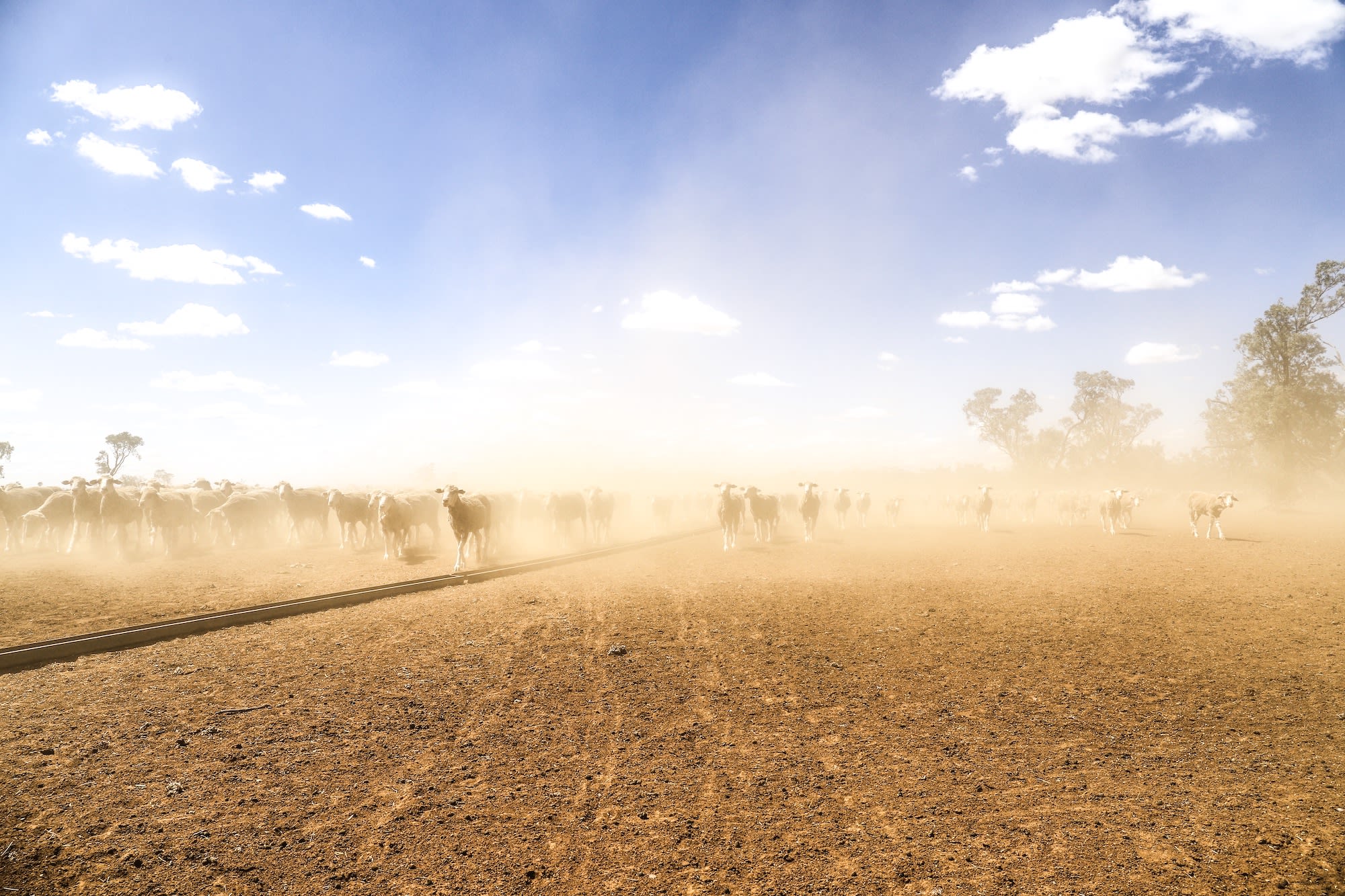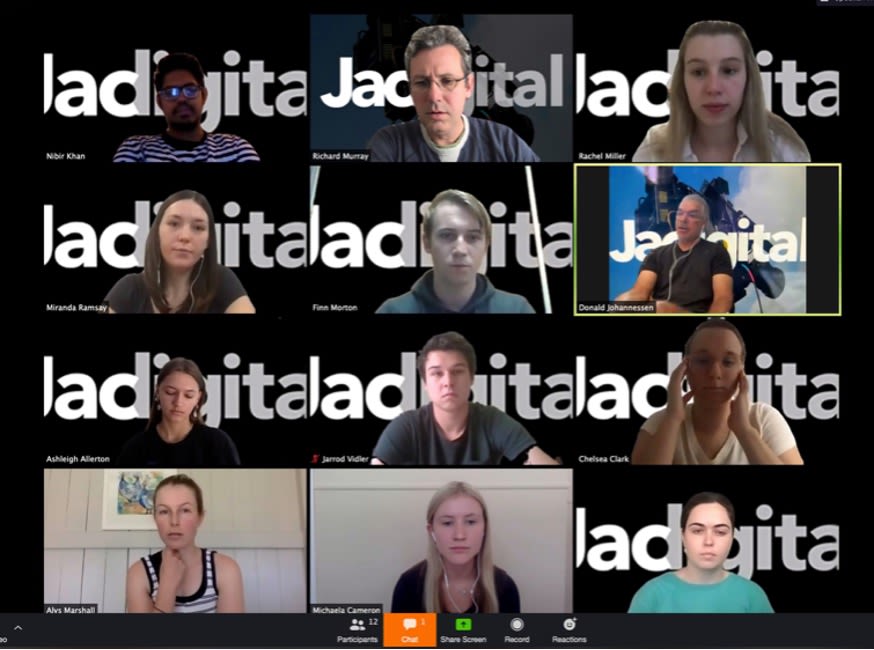Writing the first hundred years: celebrating the centenary of journalism at UQ

When Telegraph journalist F.J. Bryan penned a letter to the University of Queensland (UQ) Senate proposing “a scheme for the higher education of journalists”, little did he know it was the beginning of a long legacy of Australian journalism.
Bryan was the president of the Queensland Branch of the Australian Journalists’ Association (AJA) at the time, and one of many Australian journalists who, after the end of World War I, wanted to raise the status of journalism as a profession.
That meant establishing professional standards and ethics, as well as professional wages. A university degree seemed like the best way to make this happen.

A letter from president of the Queensland Branch of the Australian Journalists’ Association, F.J. Bryan, which was addressed to Professor Michie. (University of Queensland Archives)
A letter from president of the Queensland Branch of the Australian Journalists’ Association, F.J. Bryan, which was addressed to Professor Michie. (University of Queensland Archives)
Bryan’s letter led to the development of the nation’s first tertiary journalism qualification, then known as the Diploma for Journalism at UQ.
The diploma first offered studies with a focus on the subjects that journalists needed to have a working knowledge of – such as English, politics, history and economics.
This was despite Bryan’s letter on 17 June 1920 suggesting a list of topics for lectures including:
- history of British journalism
- history of Australian journalism
- law of libel
- meaning of ‘news’ and news values
- headlines, paragraphing and summarising
- relations of a newspaper to the public
- treatment of foreign news
- general organisation of a newspaper office
- policies, methods and style of the world’s greatest newspapers
- the use of books of reference
- interviewing
- book reviewing, and
- proof reading.

A letter from president of the Queensland Branch of the Australian Journalists’ Association, F.J. Bryan, suggesting classes for the Diploma for Journalism program. (University of Queensland Archives)

A letter from president of the Queensland Branch of the Australian Journalists’ Association, F.J. Bryan, suggesting classes for the Diploma for Journalism program. (University of Queensland Archives)
He went on to write that this list could be “easily made to cover 20 lectures.”
It wasn’t until 1934 that the subject range was broadened to include studies in journalism, covering, for example, legal and ethical issues.

A letter from president of the Queensland Branch of the Australian Journalists’ Association, F.J. Bryan, suggesting classes for the Diploma for Journalism program. (University of Queensland Archives)
A letter from president of the Queensland Branch of the Australian Journalists’ Association, F.J. Bryan, suggesting classes for the Diploma for Journalism program. (University of Queensland Archives)

A letter from president of the Queensland Branch of the Australian Journalists’ Association, F.J. Bryan, suggesting classes for the Diploma for Journalism program. (University of Queensland Archives)
A letter from president of the Queensland Branch of the Australian Journalists’ Association, F.J. Bryan, suggesting classes for the Diploma for Journalism program. (University of Queensland Archives)
UQ accepted its first intake of journalism students in September 1921 and saw three students enrol – two of whom sat their first exams in November that year.
Each student paid a £1 fee ($2 – or equivalent to $30 today based on inflation) to attend classes. The first student to earn UQ’s Diploma for Journalism was Daniel Quillinan, who graduated in March 1923.

An excerpt from the 1922 UQ Calendar noting the Diploma and the Statute from 1921 giving approval for gazetting. (University of Queensland Archives)
An excerpt from the 1922 UQ Calendar noting the Diploma and the Statute from 1921 giving approval for gazetting. (University of Queensland Archives)

Professor Bronwyn Lea, Head of School at UQ’s School of Communication and Arts.
Professor Bronwyn Lea, Head of School at UQ’s School of Communication and Arts.

UQ Bachelor of Journalism/Arts student Alys Marshall.
UQ Bachelor of Journalism/Arts student Alys Marshall.

UQ Bachelor of Journalism (2008) graduate and radio journalist Stephen Stockwell.
UQ Bachelor of Journalism (2008) graduate and radio journalist Stephen Stockwell.
The legacy of journalism at UQ has come a long way since its humble beginnings. Professor Bronwyn Lea, Head of School at UQ’s School of Communication and Arts, said UQ’s journalism program was still one of the most respected 100 years on.

Professor Bronwyn Lea, Head of School at UQ’s School of Communication and Arts.
“I believe it says a lot about the quality of the program, and UQ’s continued pursuit of excellence,” Professor Lea said.
“Since 1921, this program has helped shape the national media landscape by producing outstanding graduates such as the ABC’s Lisa Millar, who will be returning to UQ to make a keynote address as part of our 100 Years of Journalism at UQ celebrations,” Professor Lea said.
“We are the oldest journalism program in Australia, and perhaps the most extensive. Our journalism teaching team is comprised of distinguished scholars and leading industry practitioners. It is this teaching excellence, innovation and passion for the field that allows our program to remain a legacy.”

UQ Bachelor of Journalism/Arts student Alys Marshall.
For Bachelor of Journalism/Arts student Alys Marshall, having access to industry practitioners helped inspire her to aim high in her journalistic pursuits.
Marshall was the recipient of the 2020 JB Fairfax Scholarship for Rural & Regional Journalism and Communications. The prestigious national award encourages and supports a young student who is passionate about pursuing a career in rural journalism and communications.

Rural photojournalism by UQ Bachelor of Journalism/Arts student Alys Marshall.
Rural photojournalism by UQ Bachelor of Journalism/Arts student Alys Marshall.
“I am most excited about the people that I get to meet through the program. Obviously having UNESCO Chair in Journalism and Communication Peter Greste as a lecturer would make any journalism student feel a bit star struck, but I have also been introduced to so many industry contacts through my journalism professors,” Marshall said.
“You only have to take a look at some of UQ’s journalism alumni to see how long the legacy is in this school, and it comes back to the contacts you are able to make as a journalism student. I think that’s the real legacy – that you are set up, not just with the skills you need, but with the contacts that will help you get your foot in the door, and long after that.”

UQ Bachelor of Journalism (2008) graduate and radio journalist Stephen Stockwell.
It was this same access to industry that helped shape the career Bachelor of Journalism (2008) graduate and radio journalist Stephen Stockwell. After almost a decade as a cross-platform reporter for Triple J’s Hack program, Stockwell has come full circle – now in the role of Station Manager at 4ZZZ.
“I've always been someone who questions authority and likes speaking truth to power. I didn't know what I wanted to do when I finished school, but I liked writing and thought journalism would help me develop those skills.”
“When I was a student, UQ invited the news co-ordinators from 4ZZZ to deliver a lecture in my Journalism in Sound course. When the lecture finished, they asked if anyone was interested in volunteering at the station and I put up my hand,” Stockwell said.
“Two days later I was reading the news headlines on-air at 4ZZZ and I haven't looked back since.”
According to Professor Lea, it’s student and alumni stories like this that make her proud to be heading the School of Communication and Arts in its centenary year.
“We endeavour to produce outstanding graduates and equip our students with multiplatform media, writing and research skills, as well as traditional journalistic attributes of fairness, accuracy, persistence, curiosity and news sense,” Professor Lea said.
“It showcases 100 years of professionalism, creativity and scholarship that underpins our program.”
That same creativity was necessary last year, when the journalism program needed to adapt to the challenges that came with the COVID-19 pandemic.
In the beginning of Semester 1 2020, all the mainstream newsrooms across Brisbane closed their doors to journalism interns.
With 16 students enrolled to complete their mandatory internships that semester, Dr Richard Murray teamed up with JACDigital Coordinator Donald Johannessen to create the UQ COVID-19 Newsroom.

Dr Richard Murray (centre top) and JACDigital Coordinator Donald Johannessen (second row, right) running the UQ COVID-19 Newsroom via Zoom.
Dr Richard Murray (centre top) and JACDigital Coordinator Donald Johannessen (second row, right) running the UQ COVID-19 Newsroom via Zoom.
The mobile newsroom saw students creating industry standard cross-platform content themed around ‘the untold stories of COVID-19’, with all editorial meetings held over Zoom. The project went on to be nominated for the UQ Award for Excellence in the ‘Response to COVID-19’ category.
“This program reflects the way we are continually innovating to ensure our students can report and deliver news under a disrupted environment created by the COVID-19 pandemic,” Professor Lea said.
“It’s not all about the past – our journalism program continues to pivot to adopt cutting edge techniques for news gathering and production to ensure that our students are industry ready, whatever the future may hold.”
Celebrate 100 Years of Journalism at UQ at Customs House
The School of Communication and Arts will be hosting an event at Customs House on Tuesday 18 May 2021.
The event will feature a keynote presentation on the future of journalism from UQ graduate and senior ABC journalist Lisa Millar.
What are your memories of journalism studies at UQ?
Let us know by leaving a comment below. Your comments here are governed by Facebook Terms of Service and UQ Social Media Terms of Use.


